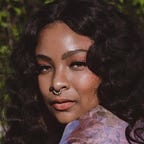What the F*ck is PRINT AINT DEAD?
Literature is so infamously and universally white.
Growing up as a writer of color, I found myself forced over and over again to read, digest and critique white people’s literary work. Despite my vivid imagination as a child, when I read, the characters in my head were almost always white by default, unless specified as otherwise by the author. When I picked up the pen and began writing fiction in middle school, my characters were also almost always white. By default.
Over the years, this default has been changing, though it hasn’t progressed as much as we want it to. Year after year, there are more and more writers of color building and sharing their stories, further changing the literary landscape. This year was a record year for POC- we dominated The New York Time’s Bestseller List, once again proving that diverse voices and representation matter in literature.
Yet so many of the spaces we’re discussing literature, especially literature written by POC, remain dominated by whiteness. Roxane Gay famously addressed a portion of this in her 2011 essay “Where Things Stand”.
“We looked at 742 books reviewed (in The New York Times), across all genres. Of those 742, 655 were written by Caucasian authors” — Roxane Gay
Many of these literary institutions are still primarily owned and operated by white people, yet we still use them as a standard with which to measure our work. Studies done in 2016 found that the majority of the staff of publishers and review journals are white women. Other studies suggest that white women spend the most on books. It isn’t doesn’t come as a surprise in a literary world has and is dominated by whiteness. “Writers of colour pander to the white woman” said Man Book winner and author Marlon James at a 2015 event with The Guardian. We are forced by publishers and platforms to pander to the white gaze for coins.
In our area, wefound that many spaces critiquing literature were also predominantly white. Book clubs seem mainly white and POC geared literary magazines are all but non existent in my city. When authors come to Boston for book tours, they often focus their attention on historically established institutions like Harvard Book Store, Barnes & Nobles or Brookline Booksmith, all in predominantly white and affluent areas with attendees who are also mainly white.
Somehow, people are consuming POC literature at an increasing rate, yet we aren’t having these discussions centered in POC spaces.
Finesse Lit aims to make literature accessible to everyone through multi-media storytelling. We do this by de-constructuring the very white ways in which we discuss literature. Our visuals interpret writing for visual learners while our book club meet ups provide a physical safe space for POC to gather and talk about lit. We are following the models of other amazing platforms like Literary Swag based in New York and Well Read Black Girl- we are reclaiming our literary landscape while decolonializing the language that has historically colonized our tongues.
